Understanding the physiological process of osteoporosis
Osteoporosis occurs because of a bone demineralization, which is the result of the increased action of the osteoclast cells.The consequences of this process are not only bone diseases, but a large array of other diseases.T.C.Fry and Dr. Paul Fanny explain these facts.
“Osteoporosis, which means 'porous bones', is the foundation of the entire so-called “aging” process; it produces the decrepitness of old age and it leaves in its wake a maelstrom of age-related degenerative conditions. Osteoporosis results from an insidious process of bone demineralization, which, over a period of many years, robs the bones of up to half of their original calcium content. The bones are left frail and weak, and to make matters worse, much of the lost bone calcium ends up in the walls of the blood vessels, the skin, the eyes, the joints and various internal organs.
The calcium that finds its way to the blood vessels causes hardening of the arteries; that which ends up in the skin causes wrinkling. In the joints the errant bone calcium takes the form of arthritic deposits, in the eyes it takes the form of cataracts and in the kidneys and bladder it becomes what we know as stones. Thus, osteoporosis is (literally) the source of a broad range of degenerative processes.
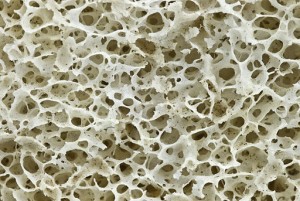 It is doubtful the bones of Westerners ever reach full maturity. It is beyond doubt, however, that at some stage of adulthood, their bone calcium begins to ebb and be carried away in the bloodstream. In time, the entire skeletal structure becomes porous, frail and weak. As members of that weakened structure, the vertebrae tend to yield to the load of the torso, so the back is wont to become crooked, compressed and painful. Such are the earmarks of osteoporosis, and with its onset, the individual tends to become stooped and normally loses inches off of his or her height. Spontaneous fractures of the vertebrae are common, as are fractures of the hips, arms, and legs. All of the bones are left vulnerable to breaks, which, when they do occur, are slow to heal.” (T.C.Fry)
It is doubtful the bones of Westerners ever reach full maturity. It is beyond doubt, however, that at some stage of adulthood, their bone calcium begins to ebb and be carried away in the bloodstream. In time, the entire skeletal structure becomes porous, frail and weak. As members of that weakened structure, the vertebrae tend to yield to the load of the torso, so the back is wont to become crooked, compressed and painful. Such are the earmarks of osteoporosis, and with its onset, the individual tends to become stooped and normally loses inches off of his or her height. Spontaneous fractures of the vertebrae are common, as are fractures of the hips, arms, and legs. All of the bones are left vulnerable to breaks, which, when they do occur, are slow to heal.” (T.C.Fry)
“Osteoclast is a multinuclear cell associated with the absorption and removal of bone; osteoclasts become highly active in the presence of parathyroid hormone, causing increased bone resorption and release of bone salts (phosphorus and, especially, calcium) into the extracellular fluid. Osteoblast is a cell that matures and is associated with the production of bone” (Dr. Paul Fanny)
The mineral and calcium lie: What are our bones made of?
Dr. Thompson demystifies the calcium lie and gives a more accurate perspective of the composition of bones.Most people, even many medical professionals, began to believe that bones are made of calcium. Calcium is only one of at least 12 minerals that build strong bones. A proper balance of all these minerals is essential for bone health, strong bones and the prevention of osteoporosis. But we are so programmed to believe that bones are made of calcium it has almost become dogmatic.
By the way, osteoporosis is defined as a loss of minerals from the bones, not just calcium deficiency.
The Calcium Lie has become so imbedded into our belief systems about healthy food that calcium is now added to many foods, and advertising entices us to buy these “enriched” products. Now we find calcium added to soy milk, orange juice, baby food, cereals, pasta and, yeeks- imagine this- a genetically modified carrot that contains calcium! It’s not nice to fool with Mother Nature. Be meticulous in your label reading and avoid the “calcium-enriched foods”.
Bones are made of minerals. Yes, one of these minerals is calcium, and yes, calcium is also important, but we create a grave imbalance in the body if we get too much calcium in a misguided effort to build strong bones. Remember: Calcium hardens concrete and it hardens all sorts of “stuff” in your body, too.
Here’s what the bones are made of: calcium, potassium, magnesium, manganese, silica, iron, zinc, selenium, boron, phosphorus, sulfur, chromium, and traces of many other minerals.” (Dr. Thompson)
What are the real causes of osteoporosis, teeth decay and other bone diseases?
Excess calcium and mineral deficiencies
Dr. Thompson gives an exact explanation about the causes of osteoporosis: excess of calcium and deficiency of the rest of minerals. T.C.Fry also points to the lack of magnesium and manganese as one of the culprits.But osteoporosis is not just a deficiency of minerals in the bones, it’s a deficiency of minerals in the entire body.
Joint pain, bone aches, what’s the difference? There is a difference, but the underlying problems are closely linked: excess calcium and mineral deficiencies. Osteocyte cells are responsible for the normal production of bone matrix, but when they lay down new bone over calcium deposits in the joint spaces, we get knobs, protrusions and deformed joints.
Osteoarthritis is the result of calcium-laden tissues in the joints. When you have too much calcium in the tissue, crystals or gravel begin to form, creating inflammation. Inflammation creates an abnormal healing response and as this calcium is deposited in your joints, you’ll get creaking, grinding and bone spurs (new bone formation in an abnormal location). Increasing joint deformity results.
Osteoarthritis is not exclusively caused by “gravel” in the joints or by inflammation. It’s also a process of the loss of collagen or soft tissues like catilage from amino acid deficiencies, vitamin C-complex deficiency, impaired metabolism and impaired collagen production. The result is chronic inflammation and tissue injury because your natural healing response has gone awry. This can put you at risk for other inflammatory health problems also related to calcium excess “ (Dr. Thompson)
“The integrity of the bones depends on the supply of a number of minerals, including manganese and magnesium. An adequate supply of manganese enhances the strength and density of developing bones, while an adequate supply of magnesium tends to prevent bone calcium from ending up in the kidneys and bladder as stones.” (T.C.Fry)
There are several different theories that explain why a mineral deficiency occurs.
Acidosis
Dr. Fanny, T.C.Fry, and Dr. Glenville state that acidosis is the problem.A multitude of potential causes of systemic acidosis exists, in addition to renal and respiratory disease. These include anaerobic exercise, gastroenteritis, excessive consumption of protein or other acidifying substances, diabetes, anemias, AIDS, aging, and menopause. Acidosis can also arise locally as a result of growth factor or immune reaction, vascular disease, inflammation, infection, tumours, wounds, and fractures.
Bones are not the only victims that fall prey to the devastating effects of chronic acidosis. Ligaments and tendons can become adversely affected as well, due to the result of the inhibitive effects on the production of collagen.” ” (Dr. Fanny)
“Foods that contain an excess of the acid-forming minerals (phosphorus, chlorine and sulfur) over and above the alkaline-forming minerals (calcium, potassium, sodium and magnesium) are said to have an “acid ash.” Foods that are on balance, alkaline in nature are said to have an “alkaline ash.” Protein itself forms an acid ash and this may explain why high-protein intake causes the bones to give up calcium.
It is noteworthy that every single individual involved in one of these protein-calcium studies has responded to increased protein intake with decreased calcium retention.
The relationship of phosphorus intake vis-a-vis calcium intake to bone development and retention has been the subject of extensive research. It has been found that when the phosphorus content of the diet is not excessive, a high calcium-to-phosphorus ratio promotes strong bones.
When, on the other hand, the phosphorus content of the diet is very high, bone deterioration is unavoidable.
High-phosphorus diets effect substantial rises in the level of phosphorus in the blood; and in what amounts to an effort to control the ratio of calcium-to-phosphorus in the blood, the body responds to a rise in blood phosphorus by removing calcium from the bones and releasing it into the bloodstream.
Phosphorus tends to acidify the blood. Chlorine and sulfur have the same effect, so when intake of one or more of these three minerals is excessive, the body goes in search of a buffering agent. Without some means of buffering the blood, a single overload of one or more of these minerals could cause severe acidosis, and even death. The body contains four minerals that can act as buffering agents, but only two of these, namely potassium and calcium, are available in quantity. Unfortunately, excesses of the acid-forming minerals are almost always accompanied by a rise in blood potassium levels, and since further increases in serum potassium could have dire consequences, the body tends to call upon its calcium bank (i.e., the bones) for a buffering agent.
The addition of fruits and vegetables to the diets of young men taking 140 grams per day cut their bone calcium losses by 25 percent. Fruits and vegetables have an alkaline ash, so their addition to an acid-forming high-protein diet would tend to cut the need for bone calcium as a buffering agent.
Typical diets have a strong acid ash. The first step to alleviating this situation is to eliminate from the diet those items with really high acid ashes, namely meat, eggs, fish and poultry products. Without these, normal diets would be tolerably close to neutral and the individual would be in a position to work towards a truly good diet—which means, among other things, an alkaline ash diet.” (T.C.Fry)
 “One long-term study, which followed women over seven years, found that older women who consumed a high animal-protein diet have more bone loss and a greater risk of hip fractures than women on a lower animal-protein intake.
“One long-term study, which followed women over seven years, found that older women who consumed a high animal-protein diet have more bone loss and a greater risk of hip fractures than women on a lower animal-protein intake.The same is not true of vegetable protein - it seems that with these foods, no matter how much you eat, your risk of fracture never rises.
The table [rate of hip fractures around the world compared to protein intake] shows how too much animal protein can increase the risk of hip fracture and that the more vegetable protein you eat, the lower your risk.
Research shows that vegetarians generally have greater bone density in later life. But research shows no difference in bone loss rates between vegetarians who also eat dairy foods and eggs and those who do not.” (Dr. Glenville)
Calcium absorption: Anti-nutrients
, T.C.Fry, and Dr. Glenville also recognize the role of anti-nutrients disturbing the absorption of calcium, as well as the lack of vitamins and other minerals.Spinach and rhubarb, although alkaline vegeatbles, contain a substance called oxalic acid, which reacts with calcium in the digestive system and stops it from being absorbed.” (Dr. Glenville)
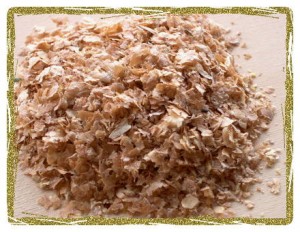 “Foods high in oxalic acid (such as spinach, chard, beet greens, chocolate, coffee) interfere with the absorption of calcium. Wheat bran (a fragmented food) inhibits the absorption of calcium. Such unnaturally large amounts of fiber can impair the body’s ability to absorb calcium and other important minerals. Natural sources of fiber (with few exceptions) don’t interfere with the assimilation of calcium and other nutrients.
“Foods high in oxalic acid (such as spinach, chard, beet greens, chocolate, coffee) interfere with the absorption of calcium. Wheat bran (a fragmented food) inhibits the absorption of calcium. Such unnaturally large amounts of fiber can impair the body’s ability to absorb calcium and other important minerals. Natural sources of fiber (with few exceptions) don’t interfere with the assimilation of calcium and other nutrients. During food digestion, oxalic acid combines with calcium and forms an insoluble compound, calcium oxalate, so that the calcium passes out of the body without being absorbed. Those greens which contain large amounts of oxalic acid are therefore poor sources of calcium, since most or all of their calcium is lost to the body.“ (T.C.Fry)
Calcium absorption: Gut flora
Dr. Campbell-McBride highlights the role of the gut flora in the absorption of calcium.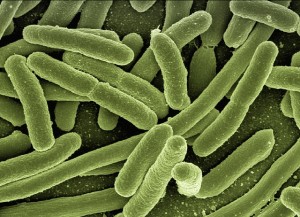 Most people with abnormal gut flora not only can’t absorb essential-for-blood vitamins and minerals from food, but their own production of these vitamins is damaged.
Most people with abnormal gut flora not only can’t absorb essential-for-blood vitamins and minerals from food, but their own production of these vitamins is damaged.People with abnormal gut flora have multiple nutritional deficiencies. Every GAPS [Gut and Psychological Syndrome] child and adult who has been tested shows a typical picture of nutritional deficiencies in many important minerals, vitamins, essential fats, many amino acids and other nutrients. The most common deficiencies are in magnesium, zinc, selenium, copper, calcium, manganese, sulphur, phosphorus, iron, potassium, sodium, group B vitamins, vitamins C, A, D, omega-3, omega-6 and omega-9 fatty acids, taurine, alpha-ketoglutaric acid, glutathione and other nutrients.
A well-functioning gut with healthy gut flora holds the roots of our health. And, just as a tree with sick roots is not going to thrive, the rest of the body cannot thrive without a well-functioning digestive system. The bacterial population of the gut is the soil around these roots, giving them their habitat, protection, support and nourishment.” (Dr. Campbell-McBride)
Refined foods and modern food
Another issue that is taken into account by Dr. Price is the lack of minerals in refined foods.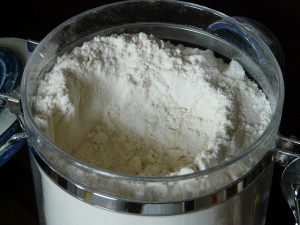 “It is of interest that the diets of the primitive groups which have shown a very high immunity to dental caries and freedom from other degenerative processes have all provided a nutrition containing at least four times these minimum requirements [United States Department of Labor, Bureau of Labor Statistics, Bulletin R 409]; whereas the displacing nutrition of commerce, consisting largely of white-flour products, sugar, polished rice, jams, canned goods, and vegetable fats have invariably failed to provide even the minimum requirements.
“It is of interest that the diets of the primitive groups which have shown a very high immunity to dental caries and freedom from other degenerative processes have all provided a nutrition containing at least four times these minimum requirements [United States Department of Labor, Bureau of Labor Statistics, Bulletin R 409]; whereas the displacing nutrition of commerce, consisting largely of white-flour products, sugar, polished rice, jams, canned goods, and vegetable fats have invariably failed to provide even the minimum requirements.It is obvious that there is great need that the grains eaten shall contain all the minerals and vitamins which Nature has provided that they carry. In an experiment, three groups of rats received the same diet, except for the type of bread. The first group received whole-wheat products freshly ground, the second one received a white flour product and the third a bran and middlings products. Only the rats on the whole wheat developed normally without tooth decay. Those on white flour had tooth decay, were underweight, had skin infections and were irritable. They did not reproduce. The third group were undersize.
Modern commerce has deliberately robbed some of nature’s foods of much of their body-building material while retaining the hunger satisfying energy factors. For example, in the production of refined white flour approximately eighty per cent of the phosphorus and calcium content are usually removed, together with the vitamins and minerals provided in the embryo or germ.
Half of the foods provided in our modern dietaries furnish little or no body-building or repairing material and supply no vitamins.
The problem is not so simple as merely cutting down or eliminating sugars and white flour though this is exceedingly important. It is also necessary that adequate mineral and vitamin carrying foods be made available” (Dr. Price)
Other foods
Dr. Glenville also writes about the intake of foods that leach the calcium out of the body, as well as stress does too.Caffeine affects the bones in two ways:
1.- It causes more calcium excretion through the urine which continues for several hours after it has been ingested
2.- it decreases calcium absorption in the gut
Caffeine is a stimulant and as such causes the release of adrenaline, just as if you were under stress, it is this release of adrenaline that causes the calcium problem.
Like caffeine, sugar also causes excess excretion of calcium in the urine. The same is true for white flour. In order to digest these refined foods your body has to use its own vitamins and minerals, so depleting your stores.
 Soft drinks have high levels of phosphorus. When phosphorus levels in your blood rise, a message is sent to your brain, telling it that there is not enough calcium. As a result the body draws calcium from your bones and teeth to balance the high levels of phosphorus.
Soft drinks have high levels of phosphorus. When phosphorus levels in your blood rise, a message is sent to your brain, telling it that there is not enough calcium. As a result the body draws calcium from your bones and teeth to balance the high levels of phosphorus.Alcohol can have a negative effect on bones by decreasing the activity of the osteoblasts (bone-building cells) and increasing bone loss and the incidence of fractures.
A diet that is high in salt can affect your bones by causing you to lose more calcium through your urine. Sodium is a mineral that is closely associated with your body’s ability to balance water retention and blood pressure. Women with high blood pressure experience a faster loss of bone minerals.” (Dr. Glenville)
Stress
Higher levels of cortisol cause increased bone resorption and decrease bone formation. More bone is resorbed because the cortisol interferes with the action of vitamin D in the digestive system and in turn blocks the absorption of calcium. There will be less bone formation because cortisol stops the osteoblasts (bone-building cells) from doing their job.” (Dr. Glenville)
Food intolerances
Food intolerance is another important subject that is addressed by Dr. Mouton, Dr. Mercola and Dr. Osborne. “ In the same way we find severe osteopenia in people suffering from dairy intolerance, we also find it in those suffering from celiac disease. It happens very frequently to celiac adults who are symptom free.” (Dr. Mouton)
“ In the same way we find severe osteopenia in people suffering from dairy intolerance, we also find it in those suffering from celiac disease. It happens very frequently to celiac adults who are symptom free.” (Dr. Mouton)“There are hundreds of different symptoms, syndromes, and diseases that gluten can create. Some of the most common mechanisms behind gluten and bone loss are:
* Intestinal atrophy leading to malabsorption of vitamins and minerals leading to inadequate bone formation.
* Leaky gut leading to food allergy formation leading to chronic inflammation leading to bone loss
* Acid reflux (GERD) leading to acid blocking medication use, leading to malabsorption of magnesium, calcium, and vitamin D leading to bone loss.
*Gluten induced cardiovascular inflammation leading to high blood pressure =>> to medications =>> leading to magnesium, calcium, CoQ10, and B-vitamin deficiencies =>> leading to poor bone formation.
* Gluten induced autoimmune attack of bone tissue directly leading to bone loss.." (Dr. Osborne)
Medicines
Other sources of problems are the intake of certain medicines, the lack of sun exposure and heavy metal intoxication. “According to a study done at Washington University School of Medicine in St. Louis, there is a strong link between osteoporosis and the use of steroids: 'High-dose cortisone is the second most common cause of osteoporosis, and we currently have no real treatment for this serious side effect' says senior author Steven L. Teitelbaum, M.D., Messing Professor of Pathology and Immunology” (Dr. Mercola)
“According to a study done at Washington University School of Medicine in St. Louis, there is a strong link between osteoporosis and the use of steroids: 'High-dose cortisone is the second most common cause of osteoporosis, and we currently have no real treatment for this serious side effect' says senior author Steven L. Teitelbaum, M.D., Messing Professor of Pathology and Immunology” (Dr. Mercola)“EIf you've been prescribed an osteoporosis drug such as Fosamax, Actonel or Boniva, it is very important that you understand how these drugs work before putting them into your body.
Web MD describes biphosphonate drugs as: '…antiresorptive medicines, which means they slow or stop the natural process that dissolves bone tissue, resulting in maintained or increased bone density and strength.'
Using these types of pharmaceutical drugs is the worst way to attempt to treat or prevent osteoporosis.
Even though they will increase your bone density, these drugs are poison! They work by killing off certain cells in your bones called osteoclasts. Osteoclasts destroy the bone as part of the natural bone regeneration process. Killing off these cells means you are left with only osteoblasts, which will increase bone density but not bone strength.
As a result, your bones lose their natural ability to build new bone and readjust to the constantly changing forces applied." (Dr. Mercola)
Calcium absorption: Vitamins
 “Vitamin D is usually produced by healthy (well nourished) skin, when it gets enough sunlight. People’s lifestyles in “grey countries” in winter don’t offer enough opportunities to spend time outdoors, consequently they usually suffer from vitamin D deficiency. People in Nordic countries are more affected than Mediterranean people.” (Dr. Mouton)
“Vitamin D is usually produced by healthy (well nourished) skin, when it gets enough sunlight. People’s lifestyles in “grey countries” in winter don’t offer enough opportunities to spend time outdoors, consequently they usually suffer from vitamin D deficiency. People in Nordic countries are more affected than Mediterranean people.” (Dr. Mouton)"June M. Wiles says that it is probable that a deficiency of calcium may exist, because the body is incapable of retaining it. We must understand that other nutrients influence the absorption, utilization and stability of calcium. Calcium will be rejected by the body if Vitamins A, D, C, magnesium, phosphorus and dietary protein are absent or deficient.
High-fat intake tends to inhibit calcium absorption through the formation of insoluble calcium compounds of the gut. Calcium absorption is aided by the presence of Vitamin C which tends to keep calcium in an absorbable state. It hardly needs pointing out that animal products are grossly high in fat and scurvy-low in Vitamin C.” (T.C.Fry)
Aluminium and heavy metals
Antiacids or indigestion medication also contain aluminium.” (Dr. Glenville)
Robert Thompson M.D. & Kathleen Barnes, “The calcium lie”
T.C. Fry, “The Life Science Health"
http://www.rawfoodexplained.com/why-we-should-not-eat-meat/osteoporosis-the-key-to-aging.html
http://www.rawfoodexplained.com/why-we-should-not-eat-animal-products/dairy-products.html
http://www.rawfoodexplained.com/the-basic-four-diet/should-we-drink-milk.html
http://www.rawfoodexplained.com/minerals/the-minerals-in-the-body.html
http://www.rawfoodexplained.com/minerals/organic-and-inorganic-minerals.html
http://www.rawfoodexplained.com/healthy-eyes-and-teeth/natural-hygiene-your-key-to-dental-health.html
http://www.rawfoodexplained.com/why-we-should-not-eat-meat/osteoporosis-the-key-to-aging.htm
Marilyn Glenville PhD, “Osteoporosis the silent epidemic”
Dr. Weston Price, “Nutrition and Physical Degeneration”
Paul Fanny, PhD, “The AAA Diet”
Dr. Georges Mouton, “Ecosystème intestinal et Santé optimale”
Marilyn Glenville PhD, “Osteoporosis the silent epidemic”
David Klein, Ph.D, “Self Healing Colitis & Crohn’s”
Dr. Natasha Campbell-McBride MD, “Gut and Phsychology Syndrome”
Dr. Peter Osborne, “Can Gluten Sensitivity Cause Bone Loss?”
Dr. Mercola:
“The "Calcium Lie" Every Woman Should Know About”
“Calcium Supplements Can Spike Your Heart Attack Risk by 30%…”
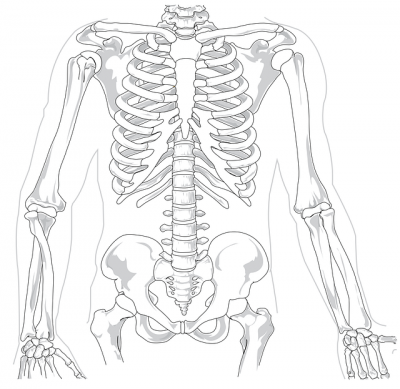 The main worry that comes to mind when you have an intolerance to dairy products is how you can get all the calcium your body needs.
The main worry that comes to mind when you have an intolerance to dairy products is how you can get all the calcium your body needs.









 Gemma Calzada es doctora en Salud Holística y terapeuta GAPS. Su objetivo es mejorar la salud con la nutrición y el estilo de vida, y ayudar a las personas que sufren intolerancias alimentarias a vivir felices.
Gemma Calzada es doctora en Salud Holística y terapeuta GAPS. Su objetivo es mejorar la salud con la nutrición y el estilo de vida, y ayudar a las personas que sufren intolerancias alimentarias a vivir felices. 
